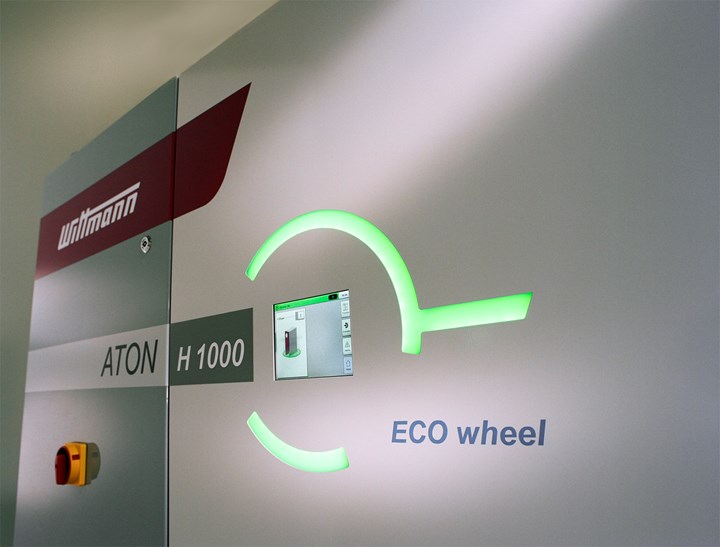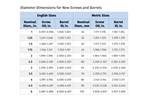Resin Drying: Centralized Segmented Wheel Dryer
Launched at K 2019, Wittmann Battenfeld’s ATON H1000 battery dryer can handle a dry air volume of 1000 m³/hr, for a drying throughput of 500-600 kg/hr.
Wittmann Battenfeld says this extension of its ATON segmented wheel dryers from beside-the-press to central duty marks its first segmented wheel dryer capable of taking on central drying. The company notes that its segmented wheel technology has been used successfully in plastics processing for more than 10 years. The initial focus was achieving a constant dew point, but customer needs have since shifted towards energy efficiency and integration. To that end, the dryers were tied into the company’s Wittmann 4.0 platform and outfitted with larger touchscreens. The ATON H1000 features a 5.7-inch touch screen. The existing line of ATON segmented wheel dryers provided compact beside-the-press moisture removal with dry air volume ranging from 30 to120 m³/hr. The new central ATON H1000 battery dryer, meanwhile, can handle a dry air volume of 1000 m³/hr, for a drying throughput of 500-600 kg/hr. The company says the system can reach up to a -65°C dew point.

The ATON H1000 displays drying progress via ambiLED lights.
At the heart of the ATON, is the ECO drying wheel, consisting of numerous segments loosely filled with a desiccant. Just the same as the beside-the-press models, the ATON H1000 battery dryer’s wheel is rotated by a chain drive, ensuring a fresh molecular sieve is always available to dry the air and help maintain a constant dew point. Wittmann Battenfeld utilizes its CrossFlow heat exchanger in the ATON, and flexible hoses are used for free air piping, enabling higher air flow while being maintenance free. Options for the ATON H1000 include dew point-controlled drying, with progress indicated by ambiLED lights to communicate dryer status. A variable frequency drive is also available as an option.
Related Content
-
Moisture Monitor Provides Instant Readings to Confirm Drying Efficacy
Real-time monitor measures material moisture continually and set points can be configured so that an alert is issued when the specified moisture level drifts outside prescribed limits.
-
ACS Adds Midwest Regional Sales Manager
Auxiliary equipment supplier names Mike Tuchalski to post.
-
New Technology Enables ‘Smart Drying’ Based on Resin Moisture
The ‘DryerGenie’ marries drying technology and input moisture measurement with a goal to putting an end to drying based on time.


